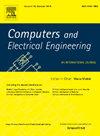Machine learning-inspired intrusion detection system for IoT: Security issues and future challenges
IF 4
3区 计算机科学
Q1 COMPUTER SCIENCE, HARDWARE & ARCHITECTURE
引用次数: 0
Abstract
The Internet of Things (IoT) has revolutionized numerous domains, including smart grids, smart cities, healthcare, and business networks, by seamlessly integrating digital and physical systems. However, the rapid proliferation of IoT devices has introduced significant security challenges due to their resource constraints, heterogeneous architectures, and decentralized nature. Traditional security mechanisms, such as firewalls and IDS, often fail to address the unique vulnerabilities of IoT environments. This study provides a comprehensive analysis of the IDS market for IoT devices from 2014 to 2023, focusing on the evolution of deployment methods, emerging trends, and the integration of Artificial Intelligence (AI) strategies to enhance IoT security. The motivation for this research lies in the increasing reliance on IoT systems in critical infrastructures and the corresponding rise in sophisticated cyberattacks. Security breaches in IoT can lead to severe consequences, including data theft, service disruptions, and physical harm. To address these challenges, this study explores AI-driven techniques, such as Machine Learning (ML), Deep Learning (DL), and Federated Learning (FL), for detecting and mitigating complex intrusion patterns in IoT systems. By leveraging bibliographic analysis using VOS viewer, the study identifies key research themes, including blockchain-based security, DDoS mitigation, and cybersecurity for IoT, through keyword co-occurrence analysis with varying levels of overlap (50 to 250 keywords). This research also evaluates various IDS deployment methods, including Host-Based IDS (HIDS), Network-Based IDS (NIDS), and Hybrid IDS, based on metrics such as detection accuracy, resource efficiency, and adaptability to IoT environments. A detailed examination of IoT-specific intrusions, such as Sybil attacks, malicious node attacks, and memory exhaustion (DoS) attacks, is conducted to highlight vulnerabilities and propose AI-enhanced solutions. The novelty of this study lies in its integration of AI strategies into IDS frameworks, comprehensive market analysis over a decade, and systematic evaluation of IDS deployment tailored to IoT systems. The findings reveal that AI-driven IDS can significantly improve intrusion detection capabilities while addressing the resource constraints of IoT devices. This research provides actionable insights for researchers and practitioners, paving the way for the development of more robust and adaptive IDS frameworks to secure the rapidly expanding IoT ecosystem.
求助全文
约1分钟内获得全文
求助全文
来源期刊

Computers & Electrical Engineering
工程技术-工程:电子与电气
CiteScore
9.20
自引率
7.00%
发文量
661
审稿时长
47 days
期刊介绍:
The impact of computers has nowhere been more revolutionary than in electrical engineering. The design, analysis, and operation of electrical and electronic systems are now dominated by computers, a transformation that has been motivated by the natural ease of interface between computers and electrical systems, and the promise of spectacular improvements in speed and efficiency.
Published since 1973, Computers & Electrical Engineering provides rapid publication of topical research into the integration of computer technology and computational techniques with electrical and electronic systems. The journal publishes papers featuring novel implementations of computers and computational techniques in areas like signal and image processing, high-performance computing, parallel processing, and communications. Special attention will be paid to papers describing innovative architectures, algorithms, and software tools.
 求助内容:
求助内容: 应助结果提醒方式:
应助结果提醒方式:


